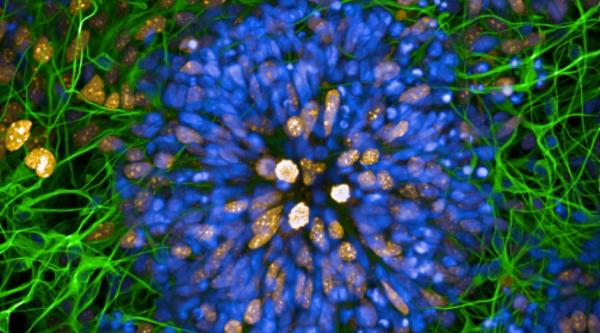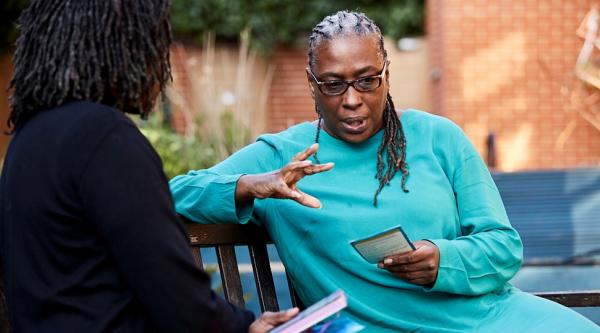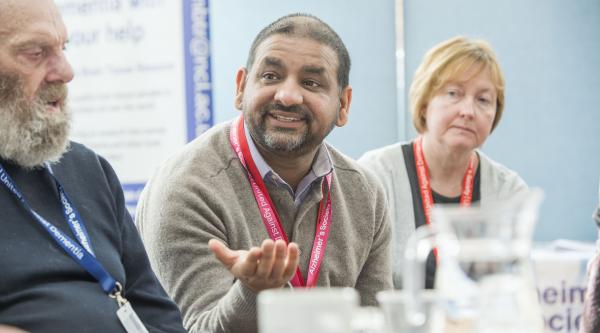Using heart scanning technology to detect dementia with Lewy bodies
Sometimes researchers can repurpose existing technologies to dementia diagnosis. In this blog, Dr Gemma Roberts tells us more about her Alzheimer’s Society funded research at the Newcastle University and what difference it will make for people living with dementia.
What does the project aim to do?
There are many different diseases of the brain that cause dementia. Quick, accurate diagnosis is crucial to enabling people with dementia to access essential care, support and treatment where available.
This project is about making a new type of scan for diagnosing dementia with Lewy bodies (DLB) more available to NHS doctors. This will help people get diagnosed more easily.
The test is a heart scan called Cardiac MIBG, which works because the nerves that control the heart are affected by DLB – it’s not only the brain that is affected.
What is the purpose of the project?
The scan is already used in Japan but doctors rarely order it in the UK - some have never heard of it. Not all hospitals in the UK know how to do the heart scan or how to interpret the results. In this project we are addressing these issues so the scan can become more widely used.
Dr Gemma Roberts, Newcastle University:
'Our project is about making an new short and simple scan for diagnosing DLB available in the NHS. '
This will mean people with DLB have more options for getting diagnosed more quickly.
'It will especially help people who might find a brain scan claustrophobic or frightening, or who would struggle to lie flat and still for half an hour for the brain scan.'
The background of our research
The most widely used imaging test to help doctors diagnose dementia with Lewy bodies is a type of brain scan called DaTSCAN. This scan will normally show if someone has DLB, but is expensive and quite a lengthy procedure for patients.
An alternative scan of the heart, called a cardiac MIBG scan, can also detect DLB. The cardiac MIBG heart scan is cheaper than DaTSCAN and quicker, so could save the NHS money. It is a more tolerable scan because, unlike with DaTSCAN, the scanner does not move or come close to the face. Cardiac MIBG is more accessible as it can be done seated or in a wheelchair, but you have to lie flat on the scanner for DaTSCAN.
In this project we aim to overcome barriers to using Cardiac MIBG in the NHS, making it more available for the diagnosis of DLB.
What does the project involve?
Currently, a barrier to offering cardiac MIBG scans is that different scanners give different results, making it difficult to know how to interpret the images. We are working with the National Physical Laboratory to come up with a way of adjusting the results so they don’t depend on the scanner.
Another barrier is that some doctors are worried that common medications and other medical conditions could make the cardiac MIBG scan look abnormal in people without DLB – a “false positive”.
We need to make sure the test is not used in patients where false positive is very likely. We are putting together a panel of experts to come up with guidelines for doctors to follow when deciding whether to order DaTSCAN or cardiac MIBG.
A DeNDRoN lay panel member, whose husband lived with DLB:
My husband went for a DaTSCAN but as soon as it started going round he kept moving, they had to strap his arms down.
'They wouldn’t let me in to hold his hand because the scanner was moving; the scan wasn’t even usable in the end because he’d moved.'
How will this project help people living with dementia?
With cardiac MIBG embedded in the NHS as an alternative to DaTSCAN, people could be offered a simpler test for DLB that is more “patient-friendly”. This will be particularly useful for people with mobility issues, people with claustrophobia – anyone who may find it difficult to lie still for a DaTSCAN.
Our YouTube video explains more about what it is like to have the two scans.
Support dementia research
Research is hope. It is only through research that we will continue to see promising results from potential new treatments.






